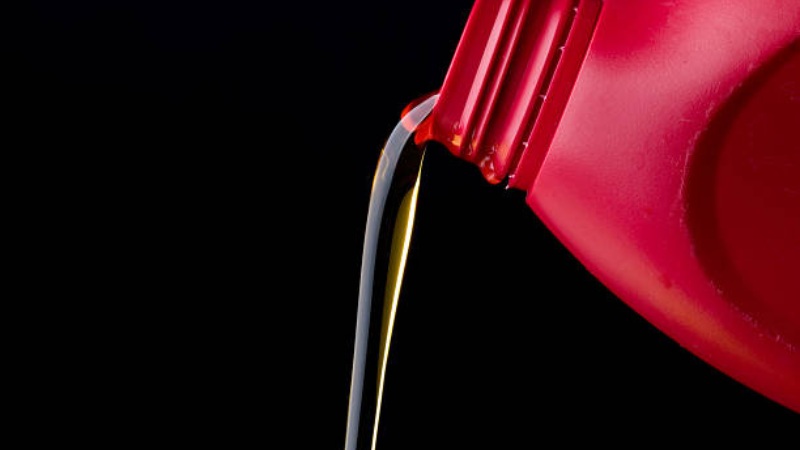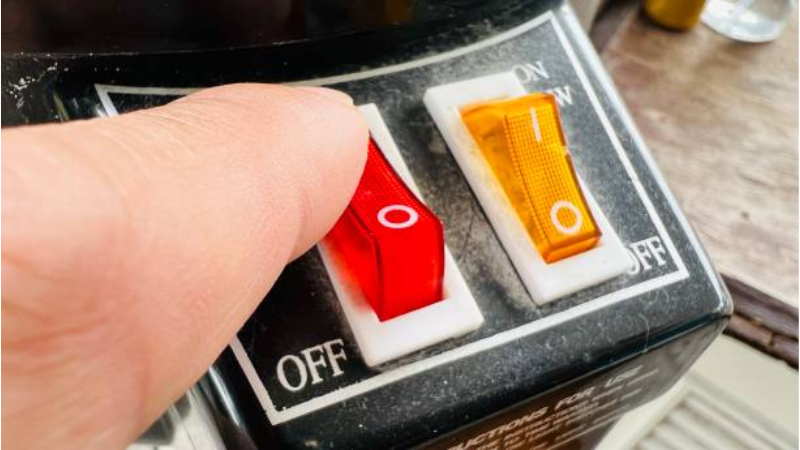Although buttons may seem basic, they are essential in electronic devices. Silicone buttons offer exceptional durability, tactile response, and a seamless user experience. However, these buttons will experience friction and a poor tactile response without proper lubrication.
This article discusses the importance of silicone button oiling in detail. We also look at the types of oiling techniques and the kind of silicone lubricant to spray on these buttons.
What is A Silicone Button?

As the name implies, a silicone button is made from silicone. Silicone is an elastomer with excellent properties, including heat resistance, flame retardancy, and UV resistance. Due to these properties, silicone buttons are used in electronic devices and other rubber products requiring user input.
Silicone buttons offer an excellent tactile response, and their flexibility makes them an ideal choice across several industries. They are also abrasion-resistant and can withstand repeated usage without losing their integrity.
Other properties of silicone buttons include thermal stability, electrical insulation, and eco-friendliness. The buttons are non-corrosive, resistant to microbial growth, and non-sticky. Silicone buttons are widely applicable in several devices, including calculators, remote controls, and industrial keypads.
Devices with silicone buttons are durable and can withstand frequent usage. However, maintenance is also critical in extending the lifespan of these devices. Besides cleaning the keypads regularly to prevent dirt buildup, lubrication is also important. Let’s take a look at the importance of silicone button lubrication.
Why is Silicone Button Oiling Important?

Although silicone buttons are durable, oiling them is essential to improve performance. Lubrication also protects them against prevailing environmental conditions and wear and tear resulting from frequent usage. Oiling creates a protective layer that reduces surface abrasion, which may result in wear and tear. Thus, it extends the lifespan of the buttons.
Silicone button oiling also creates a barrier to prevent dust and moisture from entering the buttons, protecting your electronic device. Another importance of silicone oiling is that it enhances tactile feedback. Regular oiling reduces friction, ensuring consistent feedback and allowing users to enjoy a smooth experience.
Three Different Oiling Techniques for Silicone Buttons

You can oil silicone buttons in three ways. Each method has its peculiarity, and all improve silicone buttons’ functionality. These techniques include spraying radium carving, back printing, and electroplating.
Spraying Radium Carving
Spraying involves using silicone oil to coat buttons. The oil is sprayed through a fine mist, ensuring even coverage and maximum lubrication. With spraying radium carving, you can customize button designs using silicone oil spray. Spraying radium carving allows you to add a distinctive touch to your products. You can create custom designs like branding logos or symbols, strengthening brand recognition.
Back printing
With the back printing technique, the reverse side of the buttons is sprayed with silicone oil. The oil then seeps through the button material, lubricating the button and providing protection from the inside out. You can use this technique for a seamless button surface without external markings or designs.
Electroplating
Electroplating is the most specialized oiling technique of all three. This technique involves coating silicone buttons with a metal like gold or silver. Electroplating provides sufficient oiling and a visually appealing metallic finish to the silicone buttons.
Before coating the buttons, they are prepared and coated with a conductive material. Afterward, an electrochemical method deposits a thin layer of the desired metal on the buttons.
What Kinds of Oil Sprayed on the Surface of the Silicone Button?

Several kinds of oil, including spray oil, spray matting, and spray PU, are sprayed on silicone buttons. The choice of lube depends on your desired finish, product functionality, and the prevailing environmental conditions. It is best to go for suitable oil that ensures optimal performance and longevity of your rubber products.
Spray Oil
Spray oil is a silicone-based lubricant. It is specifically formulated for silicone button oiling. For easy usage, this oil comes in spray cans that you can conveniently spray onto the surface of the buttons. In addition, the controlled application offers excellent coverage and uniform distribution of the oil.
Spray oil reduces friction and protects silicone buttons from wear and tear, improving tactile feedback and the performance of the buttons.
Spray Matting
Although spray matting is also made from silicone oil, this type of oil provides a non-glossy or matte finish for your silicone buttons. It is ideal to use spray matting to minimize light reflection on your buttons and give them a sleek, anti-reflective appearance.
Furthermore, spray matting makes the buttons less prone to glare and fingerprints while improving their durability and functionality.
Spray PU
Spray PU, or polyurethane, is an oil formulated with polyurethane components. PU has similar properties like excellent abrasion resistance, chemical stability, and flexibility to silicone. Spray PU has high adhesion and provides long-lasting protection for silicone buttons. Using this type of oil for your buttons improves their durability and resistance to environmental factors. Spray PU is ideal for buttons exposed to frequent usage or harsh environmental conditions.
Tips for Effective Silicone Button Oiling

Oiling silicone buttons is not enough. It is essential to do it the right way to ensure maximum coverage and optimal performance. Not using enough oil may lead to friction and poor tactile feedback. And using too much oil may lead to dirt buildup.
Effective silicone button oiling can be used through prep work, oil distribution, and maintenance.
Prep Work
Preparing the buttons before oiling is essential. Otherwise, the oil will trap debris, reducing the buttons’ performance and oil adhesion. Preparing the buttons involve thoroughly cleaning the button surface to remove dust, debris, and contaminants. A soft cloth or brush and a silicone-safe cleanser or mild detergent are enough to clean the button surface.
After cleaning the buttons, leaving them to dry completely before oil application is best. Moisture or residue, even in trace amounts, may affect the oiling process and adhesion.
Oil Distribution
The distribution is essential to ensure even coverage when applying oil to silicone buttons. The first step is to apply a thin layer of oil. A thin, even layer of oil can sufficiently provide lubrication and protection without excessive buildup.
Hence, apply a controlled amount evenly distributed over the entire surface of the buttons. A spray applicator or non-abrasive brush can help achieve better coverage and minimize oil wastage. The buttons will have consistent tactile feedback and minimal friction with uniform coverage.
Maintenance
Although silicone button oiling is long-lasting, maintenance is essential for maximum effectiveness and longevity. You can maintain the oiling by regularly inspecting the buttons, avoiding abrasive cleaners, and following manufacturer guidelines.
Check if the silicone buttons’ oil layer remains intact during your periodic inspection. If not, reapply the oil to provide the desired level of lubrication. In addition, when cleaning the buttons after oiling, use non-abrasive cleaners and soft cloths. Harsh chemicals and abrasive cleaners can compromise the effectiveness of the oil layer.
Another maintenance tip is to follow manufacturer guidelines. Adhere to the recommendations and instructions provided by your silicone oil manufacturer for oil reapplication and maintenance.
Application of Silicone Button

Silicone buttons are applicable across several industries. They are used in products that require reliable and user-friendly input solutions. Because of their tactile feedback, durability, and efficiency, silicone buttons are often used in switches, keypads, indicators, and control interfaces.
Switches
Switches are used across several industries, including automotive, industrial, and electronics. Silicone buttons are used to manufacture switches because they provide reliable and responsive input control. They also have excellent tactile feedback and durability, ensuring smooth operation and prolonged functionality of the switches. Applications like mode selectors, power switches, and function buttons all use silicone buttons.
Keypads
Silicone rubber keypads are great for indoor and outdoor applications due to their excellent resistance to environmental factors. These buttons provide a soft tactile feel that allows users to input commands comfortably and accurately. Electronic devices and equipment keypads that use silicone buttons include consumer electronics, remotes, calculators, industrial control panels, and communication devices.
Indicators
Silicone rubber buttons are also used as device indicators, especially in control panels and machinery that signal different functions or statuses. Because silicone buttons may have specific symbols and icons, they provide visual cues to users, ensuring a better understanding of the device’s status. Silicone buttons may serve as power on/off, operational modes, and battery status indicators.
Control
Silicone buttons are durable and have an excellent tactile response that provides precise control and a seamless user experience. Devices like remote controls and control panels can have silicone buttons for volume control, mode selection, and menu navigation functions. Using silicone buttons for your control devices allows you to provide your users with a seamless way to navigate and operate such devices.
Q&A: Common Questions about Silicone Button Oiling

How Often Should Silicone Buttons Be Oiled?
There is no particular frequency for oiling silicone buttons. However, it is essential to consider the usage and environmental conditions of the buttons. Frequently used buttons exposed to contaminants and dust may require more oiling. Generally, it is advisable to do periodic checks on the buttons and oil when necessary.
Are There Specific Precautions when Applying Silicone Oil?
Yes, although oiling improves lubrication and reduces friction, you must do it in moderation—excessive oiling results in a sticky surface. Improper oil application can compromise the tactile feedback of your silicone buttons. It can also attract dust and contaminants.
In addition, when oiling the silicone buttons, ensure the lubricant does not come in contact with the device’s circuitry or sensitive electronic components. It is best to always follow manufacturer guidelines and controlled application methods for the best results.
Can I Reapply Silicone Button Oil after the Initial Application Wears Off?
You can reapply silicone button oil if the initial application wears off. In addition, if you notice decreased button performance, you can reapply the oil. However, thoroughly clean the silicone buttons to remove residual oil before oiling them. You should also follow manufacturer instructions for applying a fresh and compelling layer.
Can I Use Regular Lubricants or Oils for Silicone Button Oiling?
Although oiling silicone buttons is essential, using oils specifically designed for that purpose is best. Regular oils may not provide sufficient adhesion, compatibility, or protection for the silicone material. Specialized silicone button oils, however, will ensure optimal button performance and improve durability.
Does Silicone Button Oiling Affect the Appearance and Feel of the Buttons?
Oiling the buttons reduce friction. However, after oiling the buttons, there shouldn’t be a significant difference in the appearance or feel of the buttons. The oil should form a thin layer over the button, providing lubrication and protection without altering the aesthetics or tactile feedback of the buttons.
Conclusion
As a business owner, providing your customers with durable products in exceptional condition is a necessity. Electronic devices with buttons, including silicone rubber keypads, controls, and switches, often experience poor tactile response and friction. Fortunately, silicone button oiling reduces these issues by providing enough lubrication for a seamless user experience.
Although there are different techniques and oils for silicone button oiling, your choice will depend on the button design, its application, and the prevailing environmental conditions. Nevertheless, regardless of your chosen technique and oil, it is best to prepare the button surface for oiling and apply the oil evenly. You should also follow manufacturer instructions to ensure proper oiling.
Discover the Perfect Solution for Your Business with Hongju Rubber Products
Hongju, a reputable rubber products manufacturer, is committed to producing eco-friendly silicone products that meet rigorous safety standards. With our expertise and commitment, we can provide you with the bests rubber products, including silicone buttons. We also oil the devices precisely to improve their performance and durability.